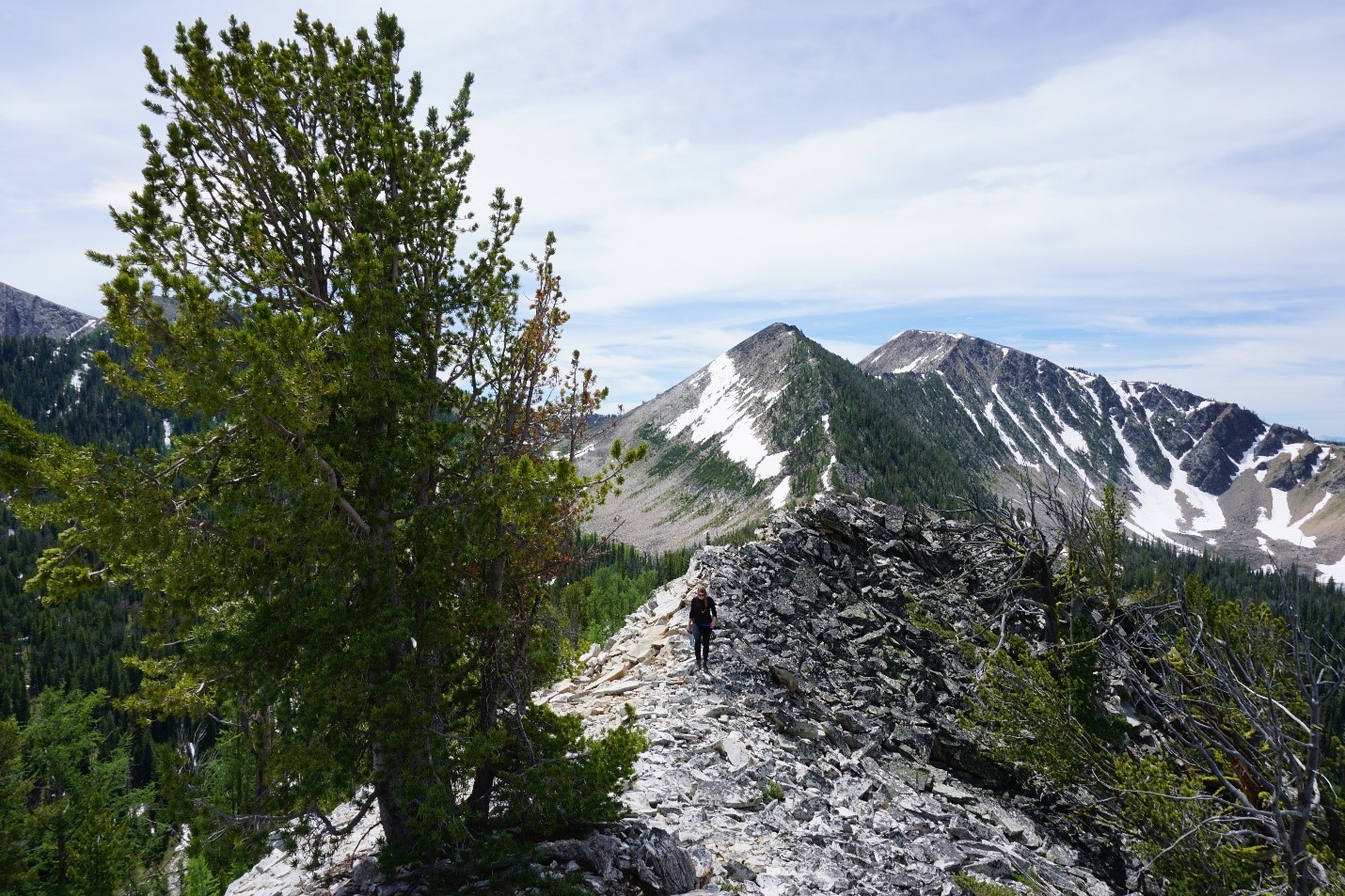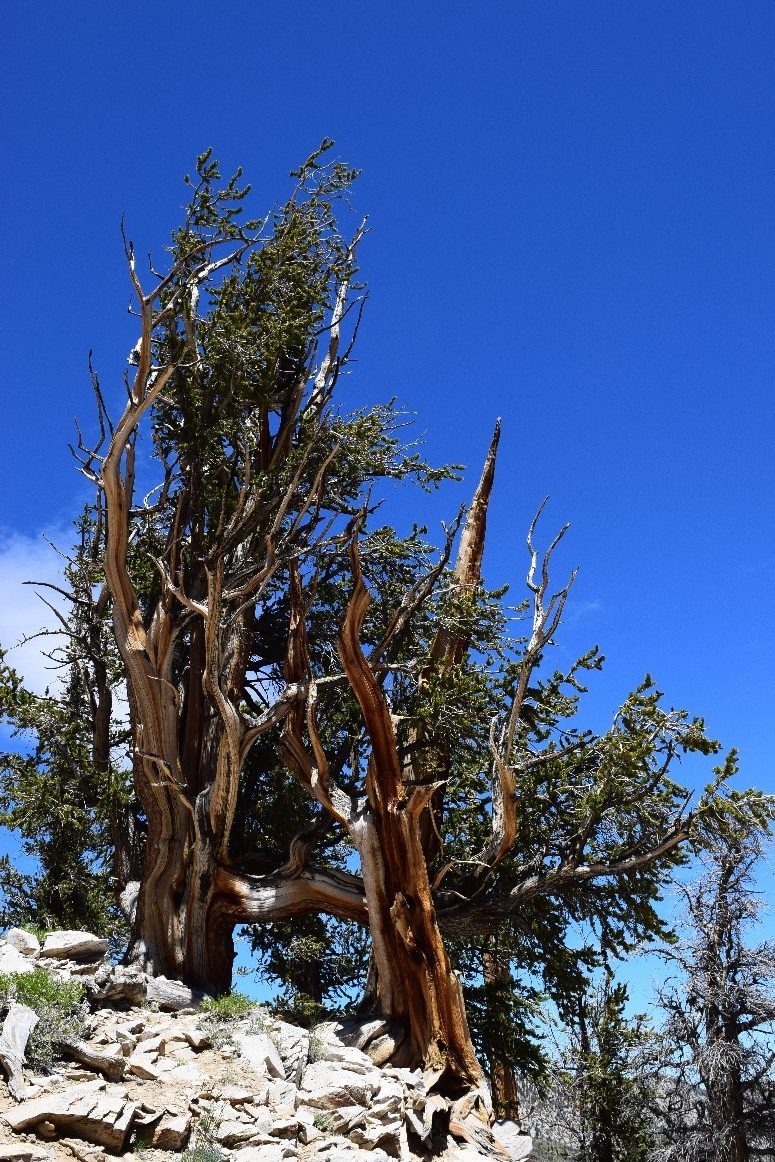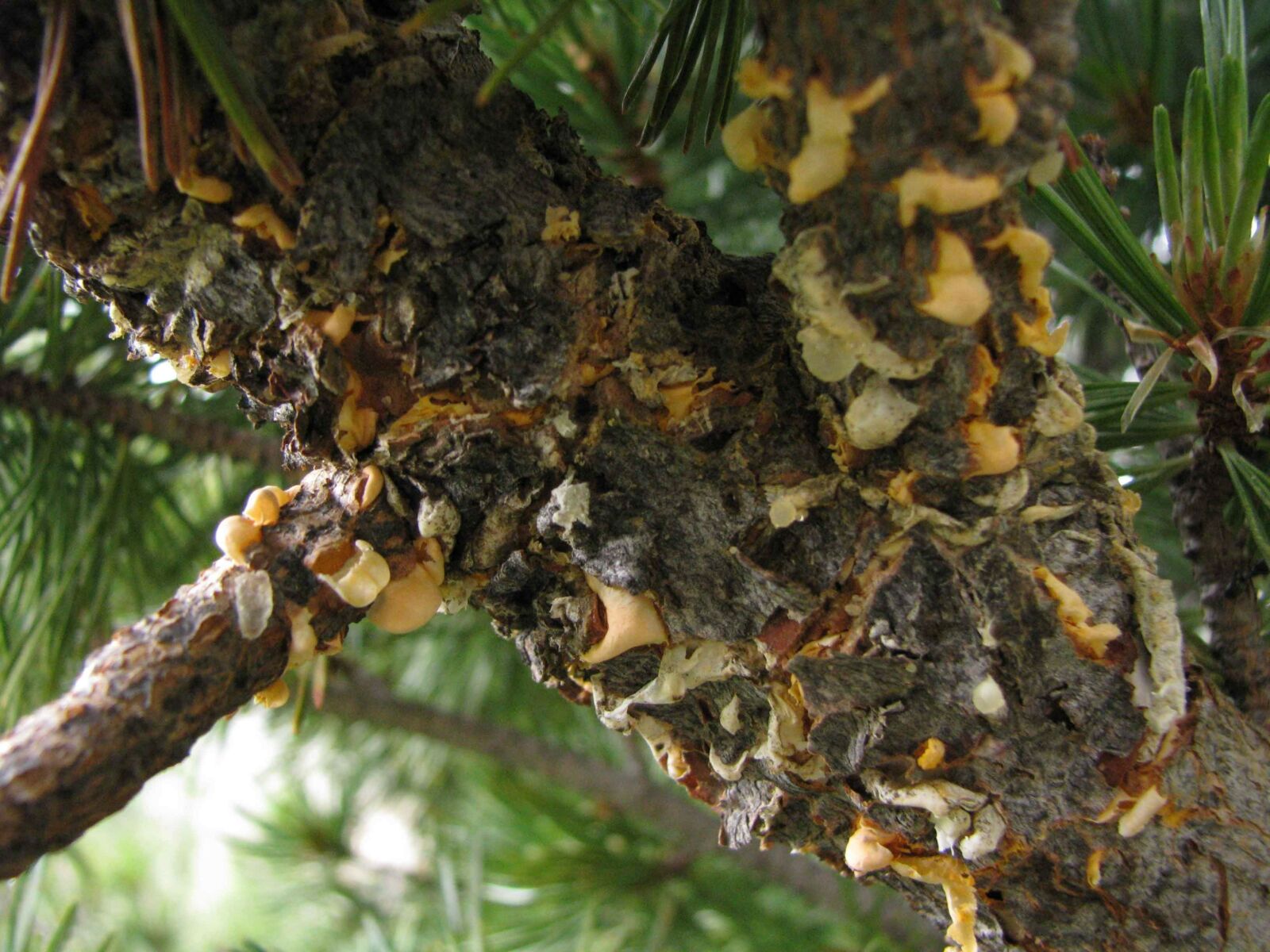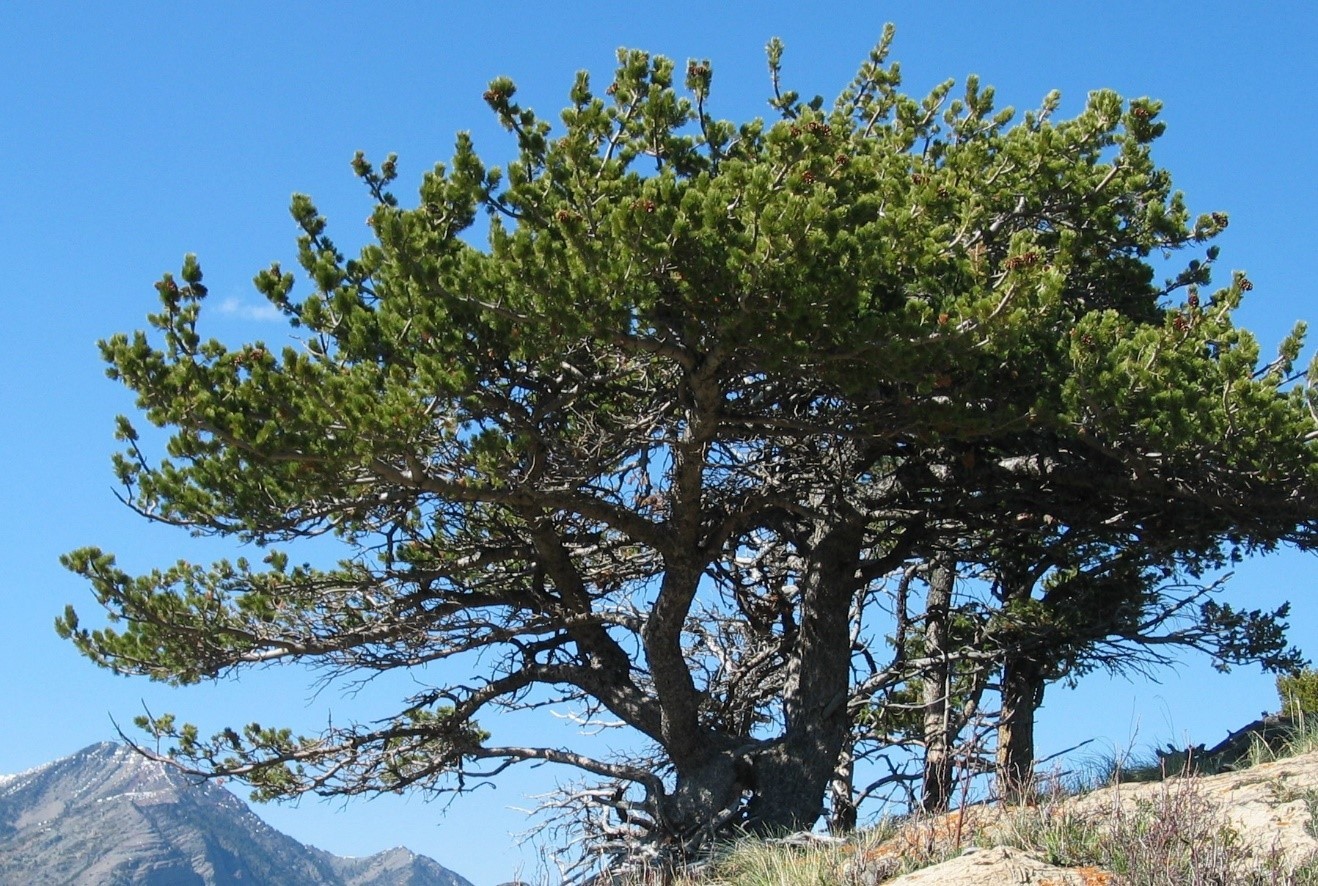Many a high-mountain wanderer has taken in a magnificent view while resting in the shade of a high five pine tree. The gnarled limbs of these ancient trees are often the final vestiges of shade at the gateway to the alpine zone. Mounting threats, however, are confronting this iconic group across their habitat range in the western U.S. and Canada.

Sarah Flanary
A hiker traverses a ridgeline beneath a large Whitebark Pine tree.
What are the High Five Pines?
The high-elevation, five-needle white pines, commonly referred to as the ‘high five pines,’ can be identified by their tendency to grow at high elevations and their needles in fascicles, or bunches, of five. The six species commonly included in the group of high five pines are:
- whitebark pine (Pinus albicaulis)
- limber pine (Pinus flexilis)
- southwestern white pine (Pinus strobiformis)
- foxtail pine (Pinus balfouriana)
- Rocky Mountain bristlecone pine (Pinus aristata)
- Great Basin bristlecone pine (Pinus longaeva)
These species typically tolerate cold, dry sites with poor soils and are often somewhat shade intolerant. Though they also grow in mixed forest types, they are most often thought of as the stereotypical wind-blown ridgeline sentinels. Depending on species and location, they can also live to be 1000 to more than 5000 years old, making them some of the oldest species on earth. The high five pines aren’t valued for their timber, but for their remarkable lifespan and iconic growth forms, which, for many, has given them great symbolic value.
The value of high five pines is not purely symbolic though; these species have vital ecological roles as well. The high five pines affect the functioning of ecosystems by providing both shade for snowpack retention and as an important food source for wildlife. Shading snowpack can reduce the melt rate, affecting erosion and downstream processes like stream flows. So, recreationists from skiers to fishermen should be thankful to high five pines for providing a stable and long-lasting snowpack. A wide range of wildlife species from birds to grizzly bears also value the energy-rich seeds and shelter provided by many of these high five pines. This food source may, in fact, be crucial to the population stability of some species like grizzly bears.

Diana Tomback
Great Basin bristlecone pine trees inhabit a rocky slope in California
What are the threats to the High Five Pines?
The high five pines face common threats and could benefit from shared research and management practices. Major threats to these species include the exotic white pine blister rust, the native mountain pine beetle, fire suppression, and climate change. The combined effects of mountain pine beetle outbreaks and white pine blister rust infections have resulted in a steep decline in several of the high five species over much of their range. Encouragingly, individuals from several species have shown genetic traits that resist the attacks of the beetle or the blister rust. Lessons learned in the harder hit areas could inform proactive management efforts in other areas that have, so far, only seen minor effects from these threats.
Fire suppression and climate change have also affected the habitat and potential for future geographic establishment of these species. Though it is impossible to determine the exact effects of climate change on high five pines, models of whitebark pine have shown, with active restoration treatments, they could maintain or create resilient high-mountain forests.

Cyndi Smith
Whitepine blister rust spores on the limb of a five-needle pine tree.
The future of high five pines
Many researchers who study these high-elevation, five-needle white pine species are optimistic that, with conservation and restoration efforts, they can endure the onslaught of threats they are facing. The Whitebark Pine Ecosystem Foundation will host a conference in September of 2020 to bring together researchers, managers, and concerned citizens to share research results and effective management practices that can help conserve these species. A positive long-term outlook for high five pines is not guaranteed, but, with commitment, we can allow these amazing species to thrive into the future.

Cyndi Smith
A limber pine tree overlooks a mountainous landscape in Southern Canada
The Whitebark Pine Ecosystem Foundation promotes the conservation of whitebark pine ecosystems by supporting restoration, education, management, and research projects that enhance knowledge and stewardship of these valuable ecosystems. Through the cooperative organization of the foundation, and networking with other organizations, government agencies, and individuals, we are able to do together what we cannot do alone.
You can learn more about the Whitebark Pine Ecosystem Foundation or the 2020 conference, “H5II: The Second Conference on the Research and Management of High Elevation Five Needle Pines,” at highfivepines.org or whitebarkfound.org
The NFF has planted more than 100,000 seedlings of whitebark pine and limber pine across nearly 1,000 acres of National Forests throughout the Western U.S. These projects support the restoration of these important species and help to establish blister rust resistance in their native range. Our campaign to plant 50 million trees will continue to support reforestation of high five pines, improving watershed health and providing food and habitat for wildlife.

